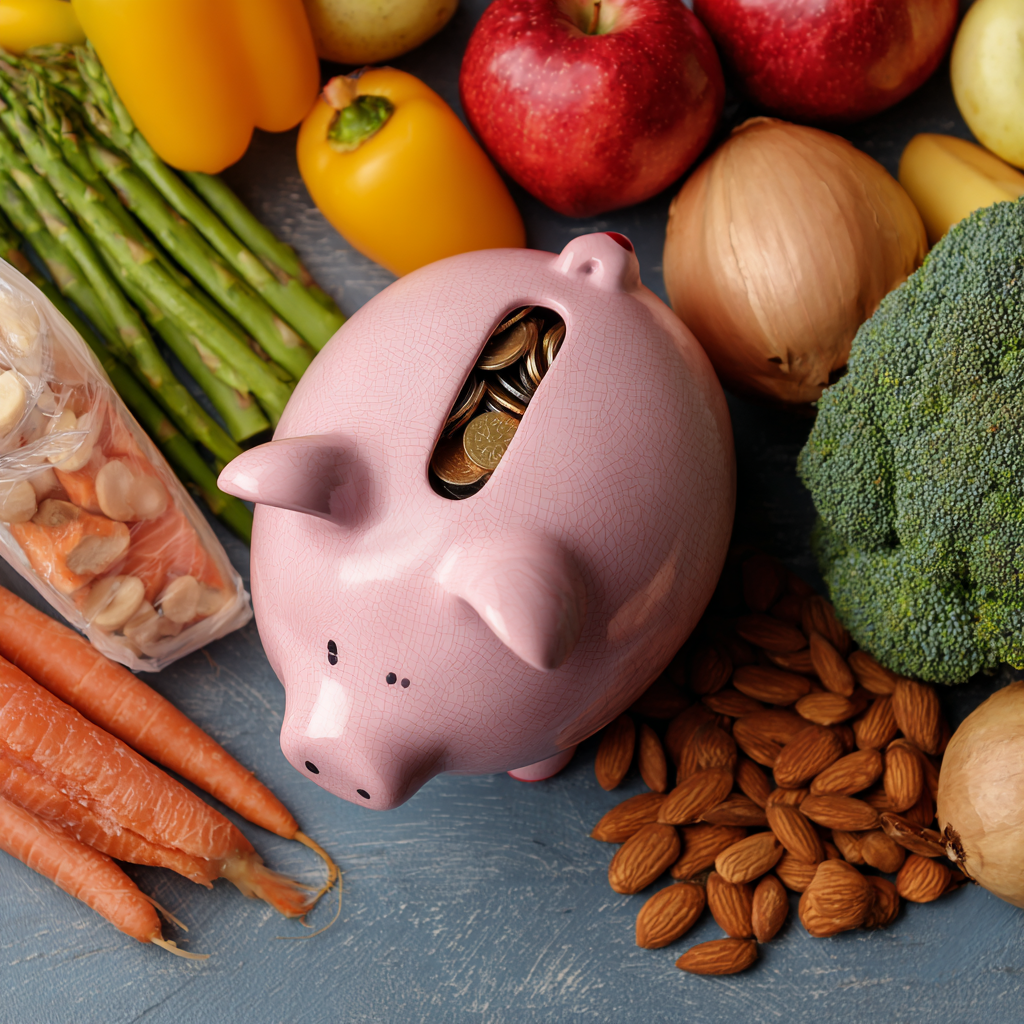Eating healthy doesn’t have to come with a hefty price tag. With food costs rising, many people believe that nutritious meals are out of reach for their budgets. The good news is that with some thoughtful planning and smart choices, it’s entirely possible to maintain a balanced diet without breaking the bank. In this article, we’ll explore budget-friendly nutrition plans and share easy, practical tips to help you save money while still fueling your body with wholesome, satisfying foods. Whether you’re cooking for one or feeding a family, these insights can help you eat well and spend less.
Table of Contents
- Understanding Affordable Nutrient-Dense Foods for Everyday Meals
- Smart Grocery Shopping Strategies to Maximize Savings
- Meal Planning and Preparation Techniques to Reduce Waste
- Incorporating Budget-Friendly Superfoods into Your Diet
- To Conclude
Understanding Affordable Nutrient-Dense Foods for Everyday Meals
When planning meals on a budget, focusing on nutrient-dense ingredients can make a significant difference in both health and wallet. Foods such as beans, lentils, and whole grains not only provide essential vitamins and minerals but also offer lasting satiety. Fresh or frozen vegetables are excellent sources of antioxidants and fiber, often available at lower prices especially when purchased in-season or in bulk. Incorporating affordable proteins like eggs, canned fish, and yogurt adds valuable nutrients without breaking the bank. By prioritizing these ingredients, it’s possible to craft meals that support overall wellness without sacrificing flavor or variety.
Making smart choices about affordable nutrient-rich foods also involves thoughtful shopping and preparation techniques. Consider stocking up on versatile items like oats, sweet potatoes, and frozen greens, which have long shelf lives and can be used across multiple dishes. Utilize simple cooking methods—such as stir-frying, boiling, or slow cooking—to preserve nutrients while minimizing waste. Here are some ideas to keep costs low while maximizing nutrition:
- Buy in bulk: Opt for grains, legumes, and seeds from bulk bins to save money and reduce packaging waste.
- Seasonal selections: Take advantage of sales on seasonal produce to maximize freshness and affordability.
- Meal prep: Prepare large batches to avoid last-minute expensive takeout
- Use every part: Incorporate vegetable stems, leaves, and scraps into stocks or stir-fries to reduce food waste.
Smart Grocery Shopping Strategies to Maximize Savings
Getting the most out of every dollar spent on groceries involves a blend of planning and savvy shopping habits. Start by creating a detailed list based on your weekly meals and stick to it. Incorporate seasonal produce and local markets for fresher options at lower prices. Take advantage of store loyalty programs and digital coupons, which often provide exclusive discounts without any added effort. Another practical tip is to compare unit prices rather than just looking at the overall price—this can reveal hidden bargains, especially when bulk-buying staples like rice, beans, or pasta.
Shopping smart also means being flexible and open to alternatives. Consider swapping premium brands for store brands, which often offer comparable quality at a fraction of the cost. Don’t overlook frozen and canned fruits and vegetables—they’re nutritious, convenient, and usually more affordable than fresh. Planning meals around sales and specials ensures you’re always buying value, while minimizing impulse purchases by avoiding shopping when hungry or rushed can prevent unnecessary expenses. Here are a few more tips to keep your grocery bills in check:
- Buy in bulk when non-perishable items are on sale.
- Use apps to track price drops and deals at your favorite stores.
- Limit processed snacks and convenience foods, which tend to be pricier.
- Prepare meals from scratch—homemade meals often cost less and are healthier.
Meal Planning and Preparation Techniques to Reduce Waste
Mastering the art of planning meals ahead can significantly cut down on food waste and stretch your grocery budget further. Start by creating a weekly menu that incorporates versatile ingredients used across multiple dishes, reducing the likelihood of leftovers spoiling unused. Don’t forget to check your pantry and fridge before shopping to avoid purchasing items you already have. In addition, batch cooking and freezing portions can preserve meals for busy days, preventing impulse buys or last-minute takeouts that often blow budgets.
Simple yet effective preparation techniques can also make a difference. Consider using vegetable scraps to make homemade broth, or repurposing stale bread into croutons or breadcrumbs. Organizing your refrigerator with clear storage containers and labeling leftovers with dates helps you keep track of what needs to be consumed first, minimizing unnecessary spoilage. Incorporate these strategies into your routine, and you’ll not only save money but also contribute positively to sustainability efforts.
- Plan flexible meals using interchangeable ingredients
- Batch cook and freeze for quick future meals
- Repurpose food scraps to reduce waste
- Organize perishables with clear containers and labels
Incorporating Budget-Friendly Superfoods into Your Diet
Embracing nutrient-dense foods doesn’t have to mean emptying your wallet. Certain superfoods offer exceptional health benefits while fitting seamlessly into a tight budget. Consider staples like lentils, canned tuna, and frozen spinach—all affordable and readily available options that pack a serious nutritional punch. Incorporating these foods into your meals not only supports a balanced diet but also stretches your food budget further, making health-conscious eating accessible and sustainable.
To maximize savings and variety, experiment with these budget-friendly options:
- Oats: Inexpensive and versatile, perfect for breakfast or baking.
- Beans and chickpeas: High in protein and fiber, great for soups, salads, or dips.
- Greek yogurt: Often available in bulk, ideal for snacks or meal toppings.
- Seasonal fruits and vegetables: Fresh, affordable, and rich in vitamins.
Incorporating these affordable superfoods can help you maintain nutritional goals without compromising quality or taste, ensuring every dollar spent contributes to your well-being.
To Conclude
Saving money on nutritious meals doesn’t have to be complicated or overwhelming. By planning ahead, focusing on whole foods, and getting creative in the kitchen, anyone can enjoy healthy eating without breaking the bank. Remember, small changes add up over time, and making mindful choices about your food can benefit both your wallet and your well-being. Give these budget-friendly nutrition tips a try, and watch how easy and affordable healthy eating can become in your everyday life!
Related Products
-
Mama Shirts for Women Mom Life Letter Print T-Shir…
Mom $12.57 -
Sale!
SmartyPants Kids Multivitamin Gummies: Omega 3 Fis…
Kids Original price was: $26.49.$19.81Current price is: $19.81. -
Sale!
The Little Dictionary of Fashion: A Guide to Dress…
Clothing Original price was: $21.99.$11.75Current price is: $11.75.







